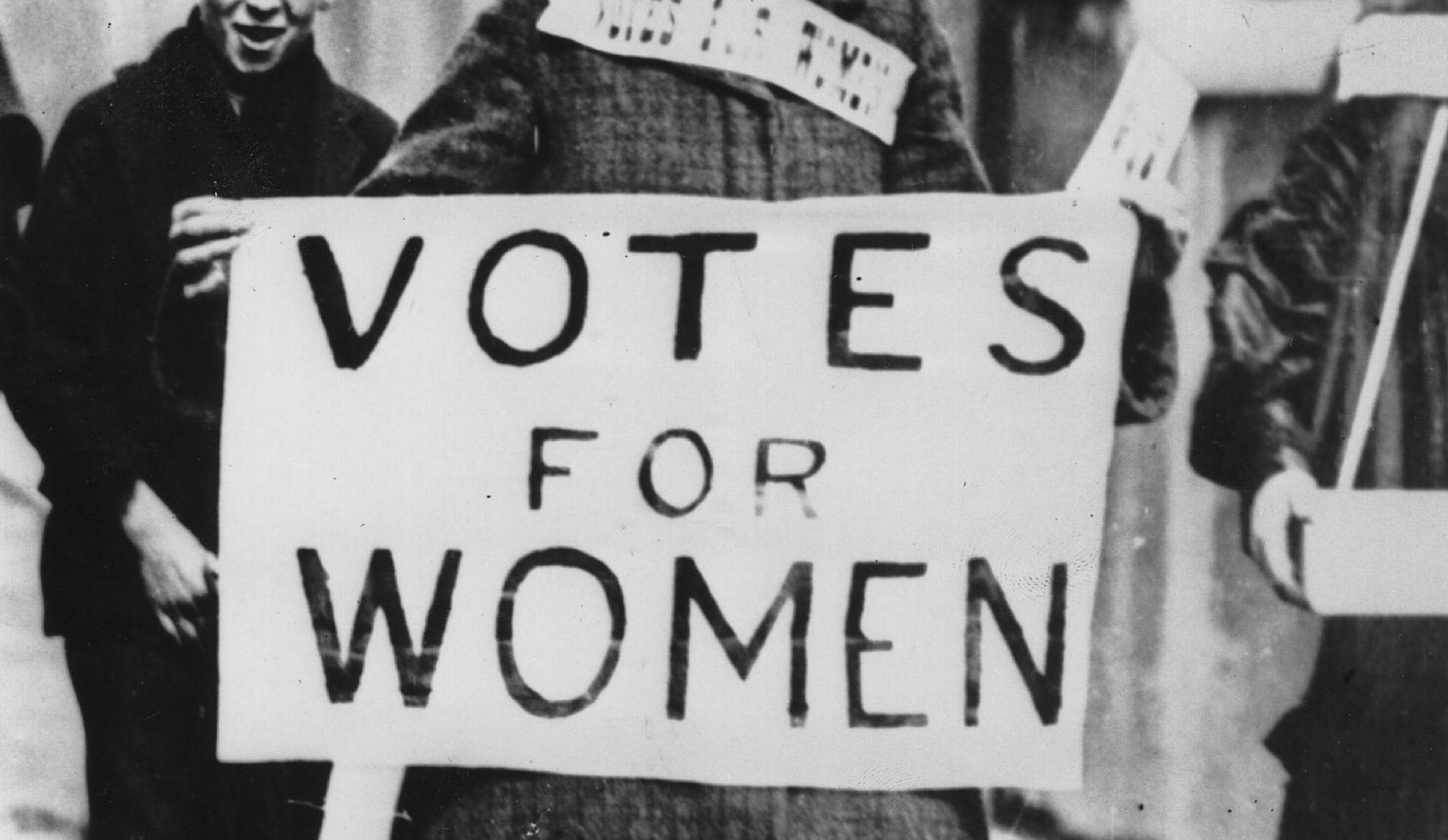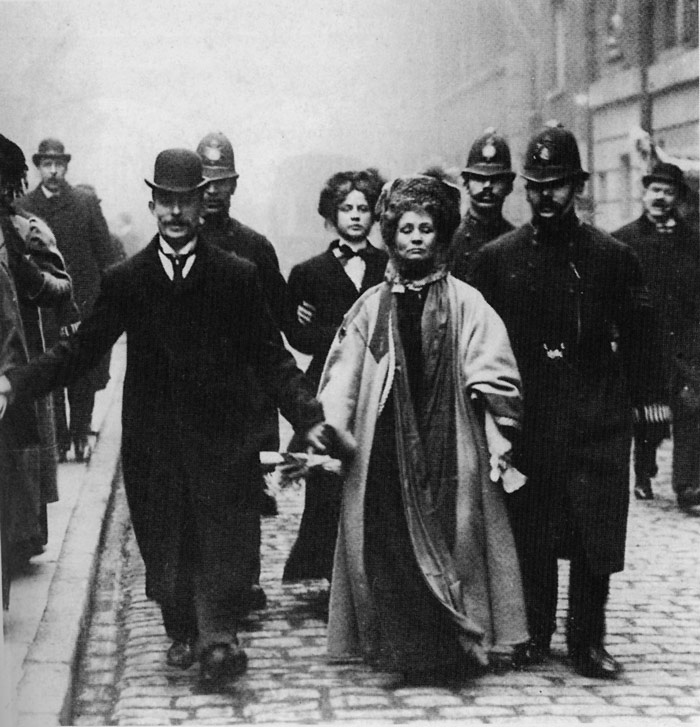
Source: https://recollections.biz/blog/emmeline-pankhurst-suffragette-part-1/
Emmeline Pankhurst: She is the figurehead of the militant feminist movement in 20th century England. Though she is not the one to first enact damages of properties, she spearheaded the progression of the militant suffragettes. Her parents were rather progressive for the time and she was endowed with “radical” ideas from a young age. Though she herself grew up in a rather privileged manner, she was able to witness and hear about social injustices taking place around her. As an adult, she married and had several children. She points out that a common criticism of feminists is that they were unable to find a husband and bore children, so they became resentful of the patriarchy and wanted to dismantle the system. She dispels this by saying that she was content to be a housewife and mother, but it was he husband who did not want to see her waste her gifts and passions. She reentered the social justice sphere and became heavily involved in the suffrage movement. Emmeline and her daughter Christabel founded the WSPU, where they led the suffragettes through the early 1900s fighting for equality.
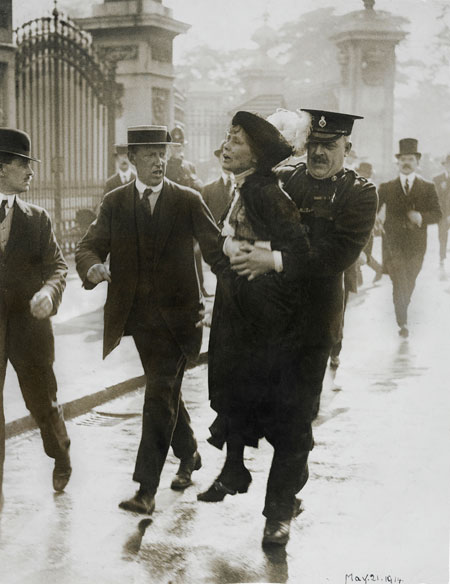
Christabel Pankhurst: Daughter of Emmeline Pankhurst, together they founded the WSPU and led the militant feminist movement. She led the charge of civil disobedience, which often resulted in fraudulent or frivolous charges being brought against her. She spent multiple stints in jail, usually the max time being 2 months. However, prison conditions were very poor, so those two months, while not an excessively long time period, was rather horrific. She (and Annie Kenney who was arrested with her) had the option to pay a fine rather than submit to a jail sentence, but that would be admitting guilt which they did not agree to. Their dedication to the cause brought a lot of attention to the WSPU, which brought in a large number of new members. This also brought the movement into the spotlight all across England.
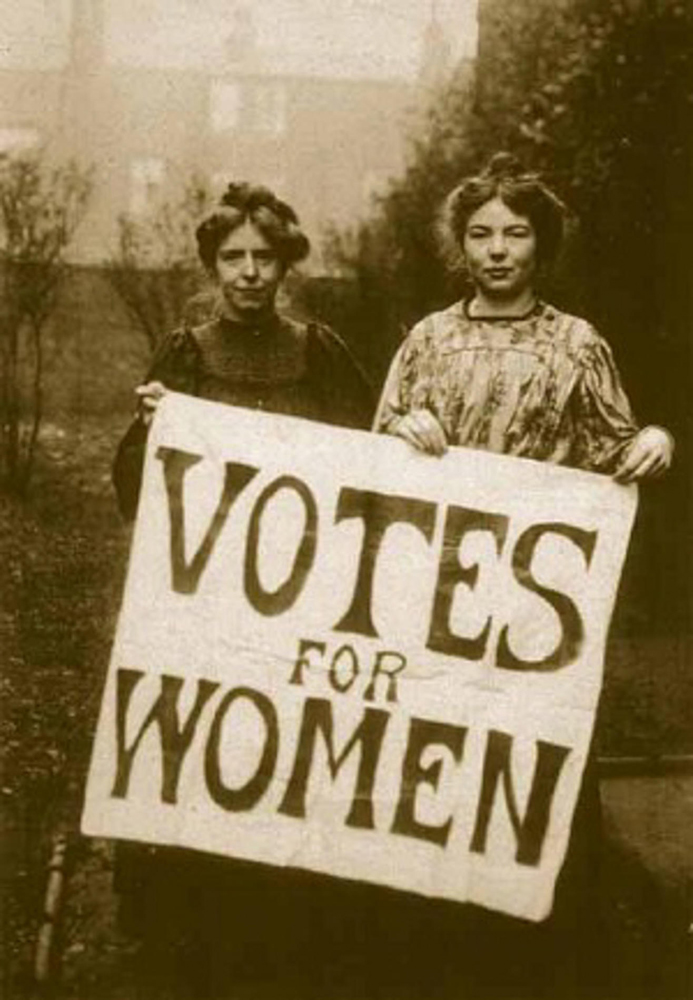
Annie Kenney: Working alongside Christabel and Emmeline Pankhurst, Annie Kenney was essential to the transition of the women’s suffrage movement from Manchester to London. She organized large groups of suffragettes and a demonstration on the opening day of Parliament in the attempt to garner attention from officials and civilians alike. This tactic definitely worked, though it infuriated members of Parliament.
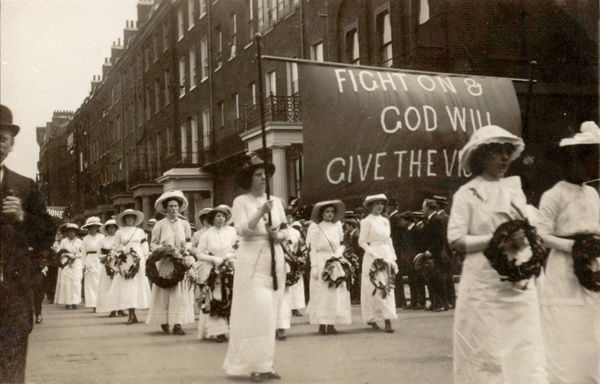
Emily Wilding Davison: A militant feminist perhaps most remembered due to her surprising and public death. As a show for the suffrage movement, she ran onto the Epsom Derby track in an attempt to stop the King’s horse. She was trampled and received fatal injuries. Prior to this incident, she was an ardent equal rights advocate. Her writings conveyed the importance of the militancy adopted by the WSPU to forward their movement. Her support of the suffrage movement was backed by her Christian faith and medieval beliefs. Many others driven by Christian beliefs also began supporting suffrage. Sustained by their beliefs, they willingly broke laws, were put into prisons, and suffered extensively. Though a Christian, Davison was sure to continually barrage the Church of England with accusations of being immoral for not equating men and women as the same class of humans. She worked tirelessly and fearlessly to further the movement. Her actions that led to her death were highly controversial, and it is said that the incident was breaking away from the WSPU and acting independently However, her death created a martyr for the WSPU and the women’s suffrage.
Emmeline Pethick-Lawrence: As was Emily Wilding Davison, Emmeline was driven by the Christian faith to support the suffragettes and WSPU. She was the editor of Votes for Women, who implored members of the WSPU to look at the movement through a religious lends and encouraged the women to take on the role of a martyr. She believed their suffering would lead to their triumph. Just as many other WSPU members, Pethick-Lawrence participated in many demonstrations and was arrested. Emmeline Pankhurst made sure to note Pethick-Lawrence’s involvement and importance to the movement.
Lillian Metge: Though not a British WSPU member, she is an important figure in the women’s rights movement. She is remembered as one of the most important Irish militant feminists. She is also responsible for the bombing of the Lisburn Cathedral.
Marion Wallace Dunlop: the first suffragette to go on hunger strike in prison in 1909.
